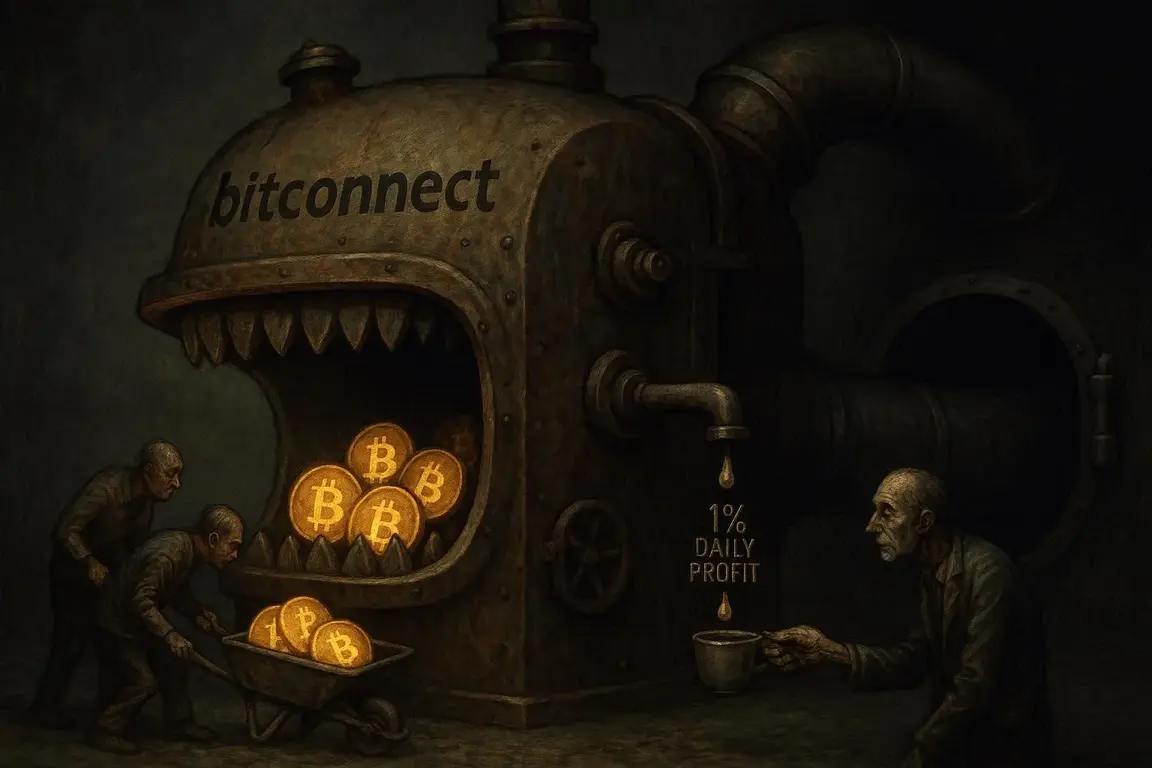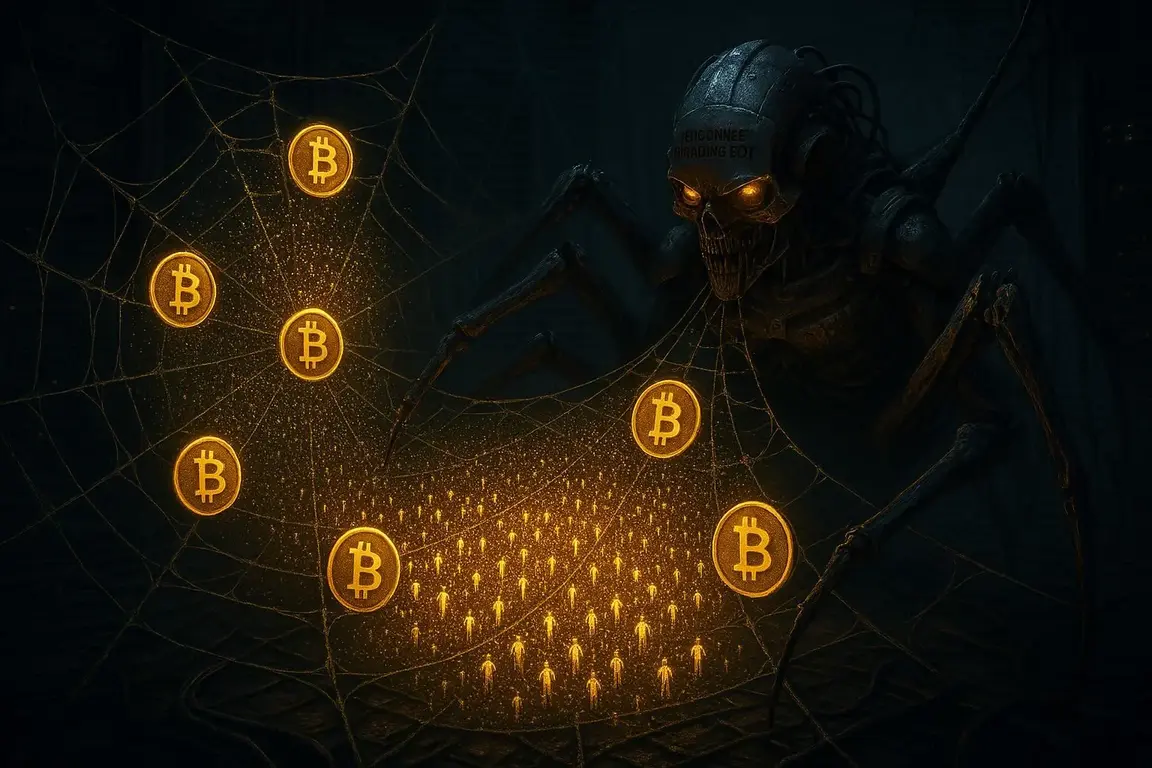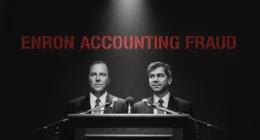The Scream That Became a Meme
January 6, 2018. A convention center in Thailand. Carlos Matos walked on stage at the Bitconnect annual ceremony. He wore a suit. His hair was slicked back. And he was about to deliver the most infamous speech in crypto history.
“HEY HEY HEYYYYY!” he screamed into the microphone. The crowd went wild. Moreover, he was just getting started.
“BITCONNEEEEEECT!” he shouted, arms spread wide. His voice cracked. His face turned red. Furthermore, he looked possessed by pure greed.
“My wife still doesn’t believe in me! I told her, ‘We are coming, and we are coming in waves!'”
The audience erupted. People jumped from their seats. Additionally, they chanted “Bitconnect! Bitconnect!” Meanwhile, Carlos continued screaming about his profits.
This moment became the most mocked video in crypto history. However, nobody was laughing ten days later. Because on January 16, 2018, Bitconnect collapsed. Consequently, $2.4 billion vanished overnight. Moreover, Carlos Matos lost everything he’d invested.
That scream? It was the sound of the greatest Ponzi scheme in cryptocurrency, destroying hundreds of thousands of lives.
Let’s investigate how Bitconnect worked, why everyone ignored the warning signs, and where the money went.

The Promise: 1% Daily Returns
How Bitconnect Claimed to Work
Bitconnect launched in early 2016. The pitch was simple yet revolutionary:
The System:
- You buy Bitcoin
- Convert Bitcoin to BCC (Bitconnect Coin)
- “Lend” your BCC to Bitconnect’s trading bot
- The bot trades and generates profits
- You earn 1% daily returns (365% annually)
- Withdraw anytime after the minimum lock-up period
Additionally, you could recruit others. Referral commissions were massive. Top recruiters earned millions in bonuses. Therefore, an MLM structure amplified the Ponzi.
The entire model rested on one claim: Bitconnect had a “volatility trading bot” that could generate consistent profits regardless of market conditions. This bot was proprietary, secret, and supposedly powered by artificial intelligence.
It was all a lie. The bot never existed.
The Yields That Screamed Scam
Bitconnect promised returns that made Bernie Madoff look conservative:
Guaranteed Returns by Investment Size:
- $100-$1,000: 0.20-0.25% daily
- $1,010-$5,000: 0.25-0.30% daily
- $5,010-$10,000: 0.30-0.35% daily
- $10,010+: 0.35-1.00% daily
Additionally, they offered:
- Referral bonuses: 7% of the recruit’s investment
- Multi-level bonuses: Up to 5 levels deep
- Staking rewards: Extra BCC for holding
- Compound interest options
The math was insane. A $10,000 investment would become $370,000 in one year. Moreover, with compounding, it could reach $3.8 million. All “guaranteed.”
Every financial expert said it was impossible. Nevertheless, hundreds of thousands invested anyway.
The BCC Token Pump
Bitconnect Coin (BCC) was the mechanism for the scam. Here’s how it worked:
The Cycle:
- Users bought BCC with Bitcoin
- BCC price rose due to buying pressure
- Rising prices attracted more investors
- More buying increases the price further
- Early investors could sell BCC for huge profits
- This “success” attracted even more victims
At peak, BCC traded at $463 per coin. Initially, it was under $1. That’s a 46,000% return. Moreover, the total market cap hit $2.8 billion. Consequently, BCC became a top-20 cryptocurrency.
But the entire value depended on new money flowing in. Once deposits slowed, the system would collapse instantly.

The Warning Signs Everyone Ignored
Red Flags From Day One
Looking back, Bitconnect was obviously a scam:
Anonymous Founders: Nobody knew who ran Bitconnect. No names. No photos. No backgrounds. Just anonymous people controlling billions.
Impossible Returns: 1% daily, consistently, regardless of market conditions? This violates financial mathematics. Yet people believed.
Recruiting Commissions: Legitimate investments don’t need MLM structures. Ponzi schemes do—they need constant new victims.
No Trading Proof: Bitconnect never showed evidence of trading. No transaction records. No audits. No verification of the “bot.”
Proprietary Bot Claims: They claimed trading secrets were too valuable to share. Classic scam tactic—complexity hides fraud.
Constant Promoter Activity: Top promoters earned millions recruiting. They had an incentive to lie. Moreover, they lied constantly.
Threatened Critics: When YouTubers called it a Ponzi, Bitconnect promoters attacked viciously. They threatened lawsuits. They harassed critics online.
Vitalik Buterin’s Warning
Ethereum founder Vitalik Buterin publicly called Bitconnect a scam in November 2017. He tweeted: “Bitconnect is an obvious Ponzi. Stay away.”
The crypto community largely agreed. However, Bitconnect’s promoters dismissed Buterin as “jealous” or “poor.” Meanwhile, they kept recruiting.
Thousands ignored the warning. They trusted promoters over experts. Consequently, they lost everything when experts proved correct.
The Promoter Network
Bitconnect’s success came from aggressive promotion. Top promoters became crypto celebrities:
Trevon James: Made $1 million+ in referral bonuses. Posted daily YouTube videos promoting Bitconnect.
CryptoNick: Teenage promoter who recruited thousands. Earned hundreds of thousands in commissions.
Ryan Hildreth: Made over $500,000 promoting Bitconnect to his followers.
Craig Grant: Top recruiter who claimed to make $50,000 monthly.
These promoters lived lavishly. Moreover, they documented their wealth publicly. Additionally, they promised followers could achieve the same success. Just invest and recruit.
What they didn’t say: Their wealth came from recruiting commissions, not investment returns. They were paid predators, not successful investors.
The Peak: Late 2017
The Mania
By December 2017, Bitconnect reached peak insanity:
Statistics:
- Total invested: $2.4+ billion
- Active users: 500,000+
- BCC price: $463 (peak)
- Daily sign-ups: 10,000+
- YouTube promoters: 100+
The crypto bull market amplified everything. Bitcoin hit $20,000. Consequently, people had Bitcoin profits to invest. Moreover, greed overwhelmed caution. Furthermore, FOMO was epidemic.
Bitconnect became mainstream. Regular people mortgaged homes to invest. Retirees moved pensions. Students took loans. Everyone wanted 1% daily returns.
The annual conference in Thailand showcased the madness. Thousands attended. Speakers promised financial freedom. Moreover, Carlos Matos delivered his infamous speech. Meanwhile, nobody questioned sustainability.
It was a fever dream. And like all fevers, it was about to break violently.
Behind the Scenes Preparation
While promoters partied, the operators prepared their exit:
Evidence Later Revealed:
- Founders moved funds to offshore accounts
- Cold wallets were being drained
- Website changes prepared for shutdown
- Customer support staff said nothing
They knew the collapse was imminent. Moreover, they were positioned to disappear with the money. Additionally, they’d leave promoters and investors to face consequences.

The Collapse: January 2018
January 4: Cease and Desist Orders
Texas State Securities Board issued an emergency cease and desist order. The order stated: “Bitconnect is operating an unregistered securities offering and appears to be a Ponzi scheme.”
North Carolina followed immediately. Then, more states began investigating. Additionally, the UK Financial Conduct Authority warned about Bitconnect.
Panic began spreading. If regulators were acting, the end was near. Moreover, withdrawal requests increased dramatically. Furthermore, the lending platform began experiencing delays.
January 16: The Announcement
Tuesday morning, Bitconnect posted an announcement: “We are closing the Bitconnect lending and exchange platform.”
The reasons given:
- Regulatory pressure
- Bad press
- DDoS attacks
But the real reason: The Ponzi was collapsing. New deposits had slowed. Consequently, they couldn’t pay existing obligations. Therefore, they pulled the plug.
All loans were closed immediately. Users received their principal in BCC tokens at $363 per coin. However, they could no longer lend. Moreover, the exchange was shut down.
This move trapped everyone.
January 16-17: The Crash
Once the announcement hit, BCC price collapsed:
The Death Spiral:
- 9:00 AM: BCC = $363
- 11:00 AM: BCC = $200 (-45%)
- 2:00 PM: BCC = $100 (-72%)
- 6:00 PM: BCC = $50 (-86%)
- Next Day: BCC = $15 (-96%)
- One Week Later: BCC = $5 (-99%)
Everyone tried to sell simultaneously. However, there were no buyers. Moreover, most exchanges had already delisted BCC. Consequently, people watched their “guaranteed returns” evaporate in real time.
Investors who’d put in $10,000 got back maybe $500. Many got nothing. The “1% daily returns” became a 99% loss in 24 hours.
The Aftermath: Devastation
Social media exploded with horror stories:
Suicide Threats: Multiple users posted suicidal messages. They’d lost life savings. Moreover, some had massive debts from loans taken to invest.
Family Destruction: “I convinced my entire family to invest. Now they hate me.” “My wife is divorcing me. I lost our home down payment.” “My parents’ retirement is gone. They trusted me.”
Financial Ruin:
- Mortgages foreclosed
- Credit card debt defaulted
- Student loans wasted
- Bankruptcy filings exploded
One user summarized it: “I went from thinking I’d be a millionaire to realizing I’m completely broke in 48 hours. I have nothing. I am nothing.”
The human cost was catastrophic.
The Promoters’ Response
Denial and Blame
Top promoters initially denied responsibility:
Trevon James: “I’m a victim too! I lost money!” (He’d already withdrawn millions in commissions)
CryptoNick: Deleted all Bitconnect videos. Claimed he’d warned people. (He hadn’t)
Craig Grant: “This is temporary. Bitconnect will return!” (It wouldn’t)
They blamed:
- Regulators for shutting down a legitimate business
- Media for spreading FUD (fear, uncertainty, doubt)
- Competitors for attacking Bitconnect
- Victims for not understanding risk
What they didn’t do: Take responsibility for promoting an obvious Ponzi.
Legal Consequences
Eventually, consequences arrived:
Class Action Lawsuits: Victims sued multiple promoters for securities fraud. Cases argued promoters knowingly promoted a Ponzi. Moreover, they profited while victims lost everything.
SEC Charges: The SEC charged several promoters with unregistered securities offerings. Specifically, their promotional activities violated securities laws.
Criminal Investigations: Department of Justice opened criminal fraud investigations. Wire fraud. Securities fraud. Conspiracy charges.
Settlements: Many promoters settled for hundreds of thousands to millions in disgorgement. However, they kept more than they paid back.
Glenn Arcaro’s Guilty Plea
Glenn Arcaro, Bitconnect’s top U.S. promoter, pleaded guilty to conspiracy to commit wire fraud. He faced 20 years in prison. Additionally, he agreed to forfeit $24 million.
His plea deal revealed scheme details:
- He knew it was a Ponzi
- He lied to recruits intentionally
- He profited over $24 million
- He conspired with the founders
This was the first major criminal conviction related to Bitconnect.

The Search for Satish Kumbhani
The Mysterious Founder
In September 2021, DOJ unsealed an indictment against Satish Kumbhani, Bitconnect’s founder. The charges:
- Conspiracy to commit wire fraud
- Operating an unlicensed money transmitting business
- Conspiracy to commit money laundering
- International money laundering
Maximum sentence: Life in prison. Additionally, $70 million in forfeiture was ordered.
The indictment revealed:
- Kumbhani was from India
- He controlled Bitconnect from the start
- He designed the Ponzi structure
- He orchestrated the exit scam
- He’d stolen over $2 billion
But there was a problem: Nobody could find him.
The Manhunt
FBI placed Kumbhani on their wanted list. Moreover, Interpol issued a Red Notice. Additionally, India began searching.
Rumors suggested:
- He fled to Southeast Asia
- Plastic surgery changed his appearance
- He’s living in the UAE under a false identity
- He might be dead
As of 2024, Kumbhani remains at large. The $2 billion he stole is gone. Moreover, victims will never recover their losses. Furthermore, he may never face justice.

The Carlos Matos Tragedy
From Meme to Victim
Carlos Matos became crypto’s biggest meme. His “BITCONNEEEECT!” scream played millions of times. Moreover, remixes went viral. Additionally, his face became synonymous with Ponzi schemes.
But Carlos wasn’t the villain. Instead, he was a victim. He’d invested his life savings in Bitconnect. Moreover, his wife’s skepticism proved correct—he lost everything. Furthermore, the speech that made him famous destroyed his life.
After the Collapse:
- Lost all investments
- Became internet mockery
- Struggled with depression
- Divorced from his wife
- Filed for bankruptcy
In interviews years later, Carlos expressed regret. He’d believed the promises. Moreover, he’d recruited family and friends. Now, he lives with that shame.
The Meme’s Dark Side
Making Carlos a meme had consequences. It turned a tragedy into entertainment. Moreover, it obscured the real villains—the founders and top promoters who knowingly ran the scam.
Carlos was a loud victim at the wrong place and time. The real criminals disappeared with billions while the world laughed at him.
Victims’ Stories
The Retiree: John’s $400,000 Loss
John, 68, invested $400,000—his entire retirement savings. “I believed the 1% daily. That was supposed to fund my golden years. Now I work as a Walmart greeter.”
He recruited his brother. His brother recruited friends. Nobody recovered anything. “Christmas dinners are silent now. Everyone blames me.”
The Young Family: Sarah’s Mortgage
Sarah, 32, took a $150,000 home equity loan to invest. “The monthly interest on my loan was supposed to be covered by Bitconnect returns. Now I’m facing foreclosure with two kids.”
Her husband divorced her. She filed bankruptcy. She’ll rent for life. “I destroyed my family chasing money.”
The Student: Michael’s Debt
Michael, 22, took $50,000 in student loans, thinking he’d repay them with Bitconnect profits. “I’m 22 with $50,000 debt, no degree, and no way to pay. I’ll die in debt because of this.”
The Survivor: James’s Escape
James invested $10,000 in May 2017. By December, it grew to $35,000. “Something felt wrong. I withdrew everything in January 2018, one week before the collapse. I got lucky.”
He faced ridicule from other investors who called him “weak hands.” Then Bitconnect collapsed. “They called me stupid for leaving. I called myself lucky for listening to my gut.”
The Recovery: None
Bankruptcy Proceedings
Bitconnect never filed formal bankruptcy. Why? The founders disappeared. Moreover, the company was offshore with no assets to recover. Additionally, no bankruptcy trustee could be appointed.
Recovery Efforts:
- Class action lawsuits filed
- Criminal forfeitures ordered
- Promoters paid settlements
Total Recovered: ~$50 million
Total Lost: $2.4 billion
Recovery Rate: 2%
Most victims got nothing. Moreover, those who received settlements got pennies on the dollar. Furthermore, legal fees consumed significant recovered funds.
The Lesson: Trust Is Expensive
Victims learned painful lessons:
Financial Lessons:
If returns seem impossible, they are.
Anonymous founders = automatic red flag.
MLM structure = Ponzi structure.
No trading proof = no trading.
Human Lessons:
Greed defeats reason.
Social proof isn’t due diligence.
Promoters lie for profit.
Complexity hides fraud.
The Regulatory Response
Bitconnect prompted regulatory action:
SEC Intensified:
More crypto fraud investigations.
Guidelines on token offerings.
Increased enforcement.
State Regulators:
Created crypto task forces.
Issued more cease and desist orders.
Coordinated interstate actions.
International Cooperation:
Cross-border fraud investigations.
Interpol involvement increased.
Extradition treaties strengthened.
But the damage was done. Moreover, new scams appeared constantly. Furthermore, victims remained unprotected.
The Bitconnect Legacy
Patient Zero of Crypto Scams
Bitconnect wasn’t the first crypto scam. However, it was the largest and most public at the time. Consequently, it established patterns:
The Template:
- Anonymous founders
- Impossible returns promised
- Proprietary “technology” claimed
- MLM recruitment structure
- Aggressive promotion
- Attack critics
- Exit scam
This template has been copied hundreds of times. OneCoin, PlusToken, and HyperFund—all followed Bitconnect’s playbook.
The Meme Culture Impact
Bitconnect created crypto’s meme culture around scams:
Common Phrases:
“BITCONNEEEECT!” = obvious scam
“Hey hey hey” = Ponzi warning
“My wife doesn’t believe in me” = blind greed
“Coming in waves” = inevitable collapse
These phrases inoculate people against similar scams. Moreover, they create cultural antibodies against fraud.
The Trust Destruction
Bitconnect damaged crypto’s reputation severely:
Mainstream Perception:
“Crypto is all scams”
“Only criminals use Bitcoin”
“Blockchain is worthless”
This perception persisted years after. Moreover, it damaged legitimate projects. Furthermore, it gave regulators ammunition against the entire industry.

Where They Are Now
Satish Kumbhani: Fugitive. Whereabouts unknown. $2+ billion stolen. Will likely never face justice.
Glenn Arcaro: Serving a prison sentence. Forfeited $24 million. Released expected 2026.
Top Promoters: Most settled for hundreds of thousands. Some are still active in crypto. Few faced prison.
BCC Token: Worthless. Trades at $0.40 (down 99.9% from $463 peak). No utility. No users.
Victims: Lost $2.4 billion. Recovered ~2%. Many bankrupted. Some committed suicide. Most will never financially recover.
Carlos Matos: Divorced. Bankrupt. Living with the trauma of being crypto’s biggest meme. Lost everything.
The Platform: Dead. Website seized. All systems shut down. Just the internet archives remain.
The Final Warning
Bitconnect destroyed hundreds of thousands of lives. Moreover, it stole $2.4 billion. Furthermore, it damaged crypto’s reputation for years. But the worst part? It didn’t need to happen.
Every warning sign was visible. Experts called it a scam. Moreover, the math was impossible. Additionally, the structure screamed Ponzi. Nevertheless, people invested anyway.
Why? Because they wanted to believe. They wanted 1% daily returns. Moreover, they wanted financial freedom. Furthermore, they trusted promoters over experts.
The Carlos Matos speech encapsulates everything wrong with Bitconnect. The manic energy. The delusional confidence. The complete detachment from reality. He genuinely believed he’d found the secret to wealth.
Ten days later, he lost everything.
That scream—”BITCONNEEEECT!”—should haunt every investor. It’s the sound of greed overwhelming reason. Of hope defeating logic. Of victims creating more victims.
Right now, new platforms promise impossible returns. They claim proprietary technology. Moreover, they recruit aggressively. Additionally, they attack critics.
These are the next Bitconnects. They’re operating now. Growing daily. Accumulating victims.
Will you be one of them?
Because the promoters are already on YouTube. The promises are already being made. Moreover, the victims are already investing.
And somewhere, in a few months or years, another platform will collapse. Another $2 billion will vanish. Furthermore, another Carlos Matos will stand on stage screaming the name of his financial destroyer.
The cycle continues. Because greed is constant. Moreover, new victims are born every day. Furthermore, scammers know the formula works.
So when someone promises 1% daily returns, remember Carlos Matos. Remember his scream. Remember his loss.
And don’t become the next meme.
Because “BITCONNEEEECT!” isn’t just a funny video.
It’s a eulogy for financial suicide.
Citations
Related reading(suggested)
Celsius Network bankruptcy: Why 1.7 Million Users Lost Everything
Luna Collapse: How Terra Destroyed $60 Billion in 3 Days
FTX Bankruptcy: Sam Bankman-Fried’s $8 Billion Fraud Breakdown









